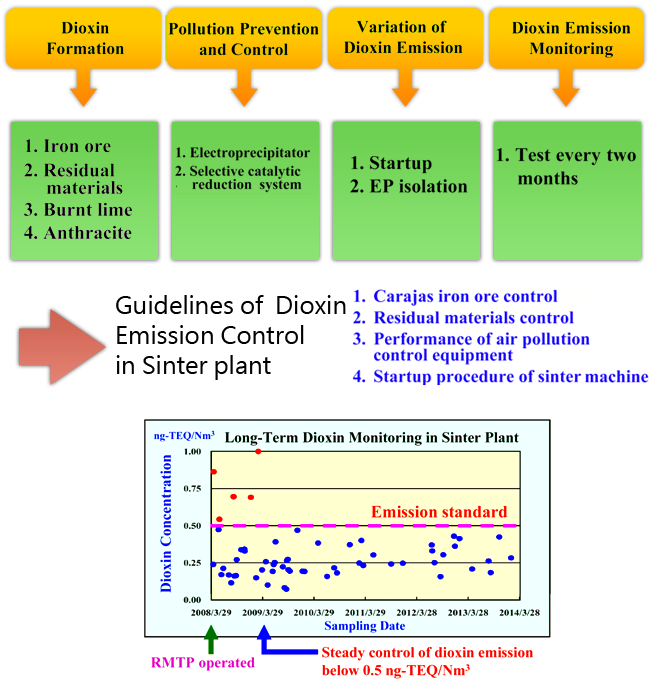
Dioxin emission control is an important issue of environmental field in CSC these years. To reinforce the management and reduction of dioxin emission by an economic way, CSC began to develop a dioxin self-managed system since 2006. In the frame of this system, a dioxin analysis laboratory organizes and carries out a long-term monitoring plan of dioxin emission and its environmental distribution. It also investigates the cause when the abnormal dioxin emission occurred and suggests the proper guidelines to reduce dioxin emission.
The CSC’s dioxin analysis laboratory has successfully established several dioxin sampling and testing techniques which supported the sample types of stack emission, ambient air, dust, ash, soil, water and blood. The dioxin analysis is based on isotope dilution method which 13C-labelled congeners are spiked into sample to monitor the recoveries of whole analysis process. The dioxin sample is cleaned up by multi-layers silica gel column connected with activated carbon column, and then analyzed by HRGC-HRMS, its detection of limit can be down to 10-12g. Up to now, CSC is the only one owned dual-accreditation of dioxin sampling and testing in worldwide steelworks.
With a series of well-designed experiments, included the factors of raw materials, air pollution control equipments and operation procedures, the main influences and variation characters of dioxin emission have been clarified in sinter plants and industrial waste incinerator. CSC formulates the corresponding guidelines to enhance the control of dioxin emission in accordance with those research results. Currently, CSC can be steady control of dioxin emission below the emission standard of 0.5 and 0.1 ng-TEQ/Nm3 in sinter plants and industrial waste incinerator, respectively.
 |
| Dioxin Emission Monitoring and Reduction in Sinter Plant |